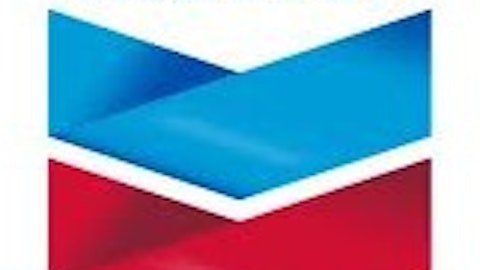After World War II, Wells Fargo & Co (NYSE:WFC) and American Express Company (NYSE:AXP) both took leading roles in the growth of the credit card industry. When Bank of America Corp (NYSE:BAC) introduced the BankAmericard (the first modern credit card and the progenitor of Visa Inc (NYSE:V) ) in 1958, it took American Express Company (NYSE:AXP) less than a month to begin issuing charge cards of its own. Within five years, more than a million American Express Company (NYSE:AXP) cards were in use and accepted at more than 85,000 establishments around the world. Eight years later, Wells Fargo teamed up with several other California-based banks to create the Interbank Card Association, which issued the “Master Charge” card until 1979, when it was renamed Mastercard Inc (NYSE:MA). Today, American Express Company (NYSE:AXP) has nearly 100 million cardmembers that spend more than $800 billion per year. Mastercard Inc (NYSE:MA) processes over $2 trillion in annual transactions, but its members only spend about a quarter as much per year on average as American Express Company (NYSE:AXP) cardmembers.
American Express has been a member of the Dow Jones Industrial Average since 1982. The credit card industry’s growth has enriched many other companies on the index, including not onlyJPMorgan Chase & Co. (NYSE:JPM) and Bank of America Corp (NYSE:BAC), but all of the major consumer-focused components.
Mexican oil for the Mexican people
On March 18, 1938, Mexican President Lazaro Cardenas expropriated all oil holdings in his country from any foreign ownership, thus nationalizing Mexico’s oil industry. The expropriation evicted 17 American and British petroleum companies from their properties — a seizure representing $450 million in value — after the foreign enterprises refused to pay Mexican workers a $40 million award that had been ordered by the Mexican Supreme Court. This seizure was the culmination of a lengthy battle between Mexican petroleum-industry laborers and foreign oil companies — a resolution in labor’s favor that coincided with Cardenas’ drive to nationalize Mexico’s natural-resource industries.
Within months, the nationalized industry was consolidated into Pemex, which is today the second-largest private corporation in the world next to Saudi Aramco. The state-owned oil company is one of the Mexican government’s largest sources of revenue, as high taxes and royalties claim the lion’s share of Pemex’s earnings. Seven decades after its creation, Pemex produced approximately 3.1 million barrels of oil per day, contributing about 4.3% of the world’s total daily production of oil.
Chase-ing after banking consolidation
Chase National Bank successfully completed a landmark merger on March 18, 1926, three years before it nearly gobbled up American Express. That day, Chase and the Mechanics and Metals National Bank enacted the largest financial consolidation in American history to that time, creating the Chase National Bank of the City of New York. The new institution was to have $1 billion in resources and surplus capital (plus profits) of $79 million. This bank continued to grow despite the Great Depression, and four years later it acquired the Equitable Trust Company of New York to become the largest bank in the world at a time when many banks fought for their very lives.
A momentous public offering
Visa Inc (NYSE:V), which had long been the world’s largest credit-card network, finally went public on March 18, 2008, in what was at the time the largest IPO in history by the value of shares sold. The $17.9 billion offering valued Visa Inc (NYSE:V) at more than $54 billion, a first-day valuation only exceeded by two other companies — most notably by Facebook Inc (NASDAQ:FB) and its $100 billion first-day market cap four years later. The successful IPO gave some hope to a beleaguered market that had already seen 21 IPOs canceled since the start of the year as an inevitable financial crisis began to crowd out any sense of optimism. JPMorgan, Visa Inc (NYSE:V)’s largest shareholder, earned a $1.3 billion windfall on its 29 million shares — enough to cover the eventual cost of acquiring Bear Stearns later that year.
Visa Inc (NYSE:V) fell with the rest of the market into 2009, but not far — it never dropped much below its IPO price. Five years later, with recovery in full swing and Americans exercising better control over their debts, Visa Inc (NYSE:V) has grown into a near three-bagger from its first public day. American cardholders carried some $330 billion in outstanding debt on Visa cards in 2011 after charging $930 billion in purchases. This, combined with $1.5 trillion in Visa Inc (NYSE:V) debit and prepaid charges for the same year, makes Visa Inc (NYSE:V) by far the largest processor by dollar volume in the United States.
The article The Day That Built the Financial Industry originally appeared on Fool.com.
Fool contributor Alex Planes holds no financial position in any company mentioned here. Add him on Google+ or follow him on Twitter @TMFBiggles for more insight into markets, history, and technology.The Motley Fool recommends American Express, Facebook, Visa, and Wells Fargo. The Motley Fool owns shares of Bank of America, Facebook, JPMorgan Chase & Co., MasterCard, and Wells Fargo.
Copyright © 1995 – 2013 The Motley Fool, LLC. All rights reserved. The Motley Fool has a disclosure policy.
